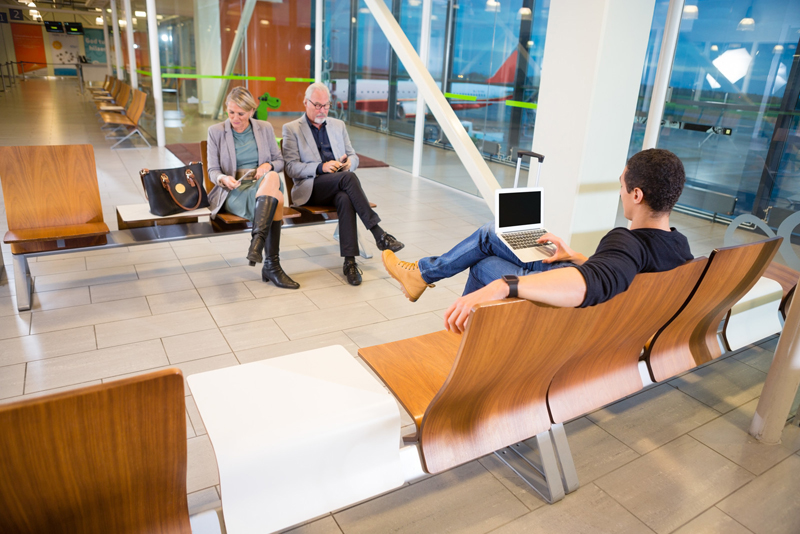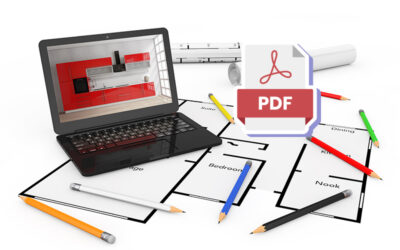Every day millions of people travel around the world for various purposes like business, vacations, sightseeing etc and so both passengers and flights are on the rise. Therefore, the airports have to deal with huge volumes of data like details of the customers, travel agencies, hotels, tourist spots, airlines, cargos and so on. This has led to the increased need for digitization in airports. To remain competitive, airports have to utilize digital solutions and the first step in any digital transition is the conversion of paper-based data into the required electronic format with the help of a document scanning service.

Over the years, airports are gradually transitioning to a digital set up. The process is slow because any new technology has to be cautiously deployed. For the airport industry, safety is most important and they have to test the performance of new digital systems and test their functionality. This could take up time and require experience. That said, the airport industry is one of the earliest industries to adopt digitization, with the first electronic airline tickets being introduced around 25 years ago. In Europe, the spectrum of digital services at airports is becoming appealing and impressive. London Heathrow Airport is launching the deployment of computed tomography security scanners (3D scanners) which, by year 2022, will make it easier and faster to move through security screening.
At airports like Berlin Tegel, Schenefeld in Germany and Schiphol, Amsterdam they have self contained RFID luggage system, and at Amsterdam in the Netherlands they enable the passengers to check their luggage and print RFID tag on their luggage themselves. Earlier, these labels and barcodes were to be manually scanned by the staff loading them onto the aircraft. But today RFID readers can scan up to 1000 pieces of luggage tagged with this technology. Estimates show that last year almost 24.8 million pieces of luggage were lost, 1000 passengers losing an average of almost six pieces of luggage each, resulting in US$2.4bn worth of damage for aviation entities. Most of the unaccounted luggage was lost on connecting flights. However, with advanced technology like mobile tracking, passengers can see where their luggage is held up.
Airports are not just about taking off and landing today. It has a fun place where passengers can go shopping, use business area, have food and enjoy various other services. This shows that digitization advancements are not only for airport workers but also for passengers to make their journey easy and comfortable. There are apps that provide real time information, gate number, boarding information, access to a variety of VIP lounge services in airports, provide airport maps, and help with travel to or from an airport.
One of the largest airports in Europe, Frankfurt uses artificial intelligence, the FRAnny robot to interact with airport passengers and help them improve the airport’s appeal and functionality. Kaunas airport plans to implement self service luggage check-in system that will help passengers skip check-in queues.
The latest advancement in digitization was at Vilnius Airport, where biometric readers came into operation in May 2019. These are 10 gates of the ABC Smart check System which are used for passports and face recognition at border check points. The person scans the document first and then their face is scanned immediately afterwards. If the biometrics matches, the system instantly opens the gate and releases the passenger from the checkpoint, which makes it easier for the passengers.
Airports Council International forecasts show that by 2034 the number of passengers at airports worldwide will be double and the World Economic Forum has estimated that the aviation, travel and tourism industry will generate more than US $ 305 billion from digitizing solutions between 2016 and 2025.
Airports must focus on utilizing digital technology to create consistency throughout the passenger journey – right from check-in through baggage handling, passport control and on-boarding. Innovations, transparency of information and better integration of flight information into their business operations are all vital to provide a great passenger experience. Digital technologies can be used to gather more data about passengers and create operational models that are centered on passengers. Customer data can be collected and analyzed in order to customize services for each individual passenger.
Digitization in airports improves the efficiency and productivity of the airports as well as ensures a comfortable travelling experience for passengers. Airports can digitize their business model with the assistance of an experienced data conversion company, or run the risk of losing control over their retail business and competitive advantage.



